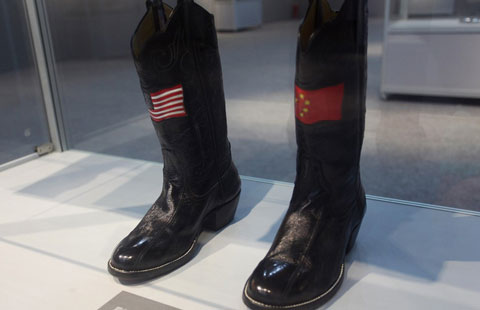Chinese journal reaches English audience
By Deng Zhangyu ( China Daily ) Updated: 2014-07-23 07:19:13
"We want foreigners to understand China's rise through its culture and history, not just by looking at its economics and politics," Wang says.
More people outside China are interested in the emerging power and eager to understand more about the country. That is why Wang and his team decided to publish an English version.
Many Chinese journals on economics and science have already published English versions, working with international publishing houses or book agents. But Wang says there are very few academic journals on China's social sciences that reach overseas markets.
Wang and his staff have adopted a wait-and-see attitude when it comes to who will be interested in the academic journal and what kind of topics can attract readers.
"We are trying our best to provide a cultural angel for foreign readers to better understand what is happening in China," Wang adds.
The Chinese government has long encouraged academic journals to produce English versions. Xu Qingshen, head of the social sciences department of the Ministry of Education, said at the journal's launching ceremony on June 25 that his department is considering investing more money and having more polices to support English versions of academic journals.
"We're optimistic about the overseas market. What matters is the quality and level of our academic journals," president of Shanghai Century Publishing Group Chen Xin told the Oriental Morning Post. Chen's company will publish 50 English versions of academic journals and books within two years.
Founded in 1951, the Journal of Literature, History and Philosophy is a renowned university journal of Shandong University and an academic leader. It has held many influential discussions on Chinese culture and history in past decades. Chinese linguist Ji Xianlin said in 1998 that to publish a paper in the journal was "really a great achievement".
The Chinese journal has had subscribers outside China since the 1950s. By the end of 2008, it had 545 overseas subscribers, according to the China National Publications Import and Export Corporation. Most are libraries of universities and academic institutes.
|
|
|
|
|
|
























 Raymond Zhou:
Raymond Zhou: Pauline D Loh:
Pauline D Loh: Hot Pot
Hot Pot Eco China
Eco China China Dream
China Dream China Face
China Face





